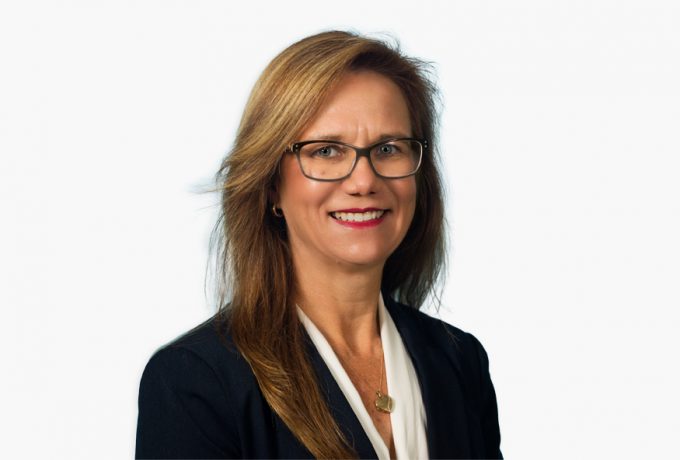
Amendments have been made to the non-arm’s length income (NALI) rules for complying superannuation funds, which may now also apply if a fund incurs non-arm’s length expenses, or does not incur any expense, in generating income or profits from investments.
Where these provisions apply, they can have significant adverse tax consequences for the fund. The changes apply from 1 July 2018, regardless of when the investment was originally entered into.
What are the NALI rules about?
The NALI rules apply to tax certain income or profits from investments of a complying superannuation fund at the top marginal tax rate of 45%, rather than the concessional rates of 15% or nil (normally applicable for funds in full pension phase). These rules are contained in section 295-550 of the Income Tax Assessment Act 1997. NALI includes any income or profits derived as a result of non-arm’s length dealings that are greater than what the amount would have been had all dealings associated with the investment been at arm’s length.
Example: A fund may lease business premises to a related party at a rate in excess of market rates (with the desired effect of having the rent taxed at concessional rates in the superannuation fund and obtaining a tax deduction for the rent in the business entity). In this example, the rent is likely to be taxed at 45% in the fund as NALI.
There are also indirect rules whereby dividends or trust distributions received by the superannuation fund can be treated as NALI where parties have not dealt at arm’s length. All distributions from non-fixed trusts (e.g. a discretionary trust) to a fund are automatically treated as NALI.
What are the NALI changes about?
The amendments contained in the Treasury Laws Amendment (2018 Superannuation Measures No. 1) Act 2019 seek to expand the scope of the NALI rules to instances where non-arm’s expenses are incurred in deriving fund income or profits from investment. Where the expenses incurred by the fund in making or maintaining an investment are less than they would have otherwise been under arm’s length dealings (including where no expense was incurred but would have been under arm’s length dealings), then the income or profit from that investment will be treated as NALI and taxed at 45%.
The changes apply to expenses whether or not they are on capital or revenue account and whether or not they are deductible. The changes can also apply irrespective of when the original investment was made by the fund, where instances of non-arm’s length expenditure is incurred to maintain the investment.
What are the changes trying to achieve?
Prior to the amendments, the ATO was concerned the NALI rules could potentially be circumvented where expenses were reduced in the superannuation fund (rather than income being increased). The amendments seek to ensure that the NALI provisions will operate where non-arm’s length dealings shift profits to a superannuation fund either by way of an increase in income or a reduction in expenses.
What are the key concerns for taxpayers?
The ATO has issued a draft ruling LCR 2019/D3 that outlines its views on how the new provision should apply. The views put forward in the draft ruling demonstrate that the NALI changes could have significant consequences well beyond the amount of any expenditure saved as a result of non-arm’s length dealings.
The ATO states in the draft ruling that non-arm’s length expenditure can effectively “taint” the asset permanently so that any income derived from that asset (including the capital gain on its eventual sale) will be taxed at 45% (with a 33.3% discount potentially available for capital gains making the effective tax rate 30%).
The permanent tainting of an investment asset is different to the original NALI approach which would only treat specific amounts of income or profits derived by a fund as NALI. For example, if rental on a property was derived as a result of non-arm’s length dealings, the lease can be renegotiated on an arm’s length basis to correct the problem going forward. This would limit the amount of NALI to the rent under the old lease.
The effect of the new rules
In the ATO’s view, the new rules apply in a way whereby expenditure saved has a nexus to all income subsequently derived from the asset. Therefore, unless the ATO changes its view in the final ruling, the problem may not be capable of being corrected by the superannuation fund going forward where there have been non-arm’s length dealings in relation to expenses.
The view expressed by the ATO is that minor amounts of expenditure saved could result in significantly greater amounts of income being taxed at the top rate of tax (including the ultimate capital gain). For example, the saving of $10 could be enough to taint the relevant asset.
General expenses & the transitional compliance approach
Further, the ATO’s view in LCR 2019/D3 is that expenses of a general nature that are not incurred when (or are less than) they ordinarily would be (e.g. accounting fees), and which do not relate to a particular asset of a superannuation fund, have a nexus to all of the assessable income of the fund. This view could have the consequence that the fund would pay tax at 45% on total fund income in the income year the expenditure was not incurred if taken to breach the new NALI provisions.
Individuals across various industries (e.g. lawyers, accountants, brokers, agents, builders, tradespeople, etc) who may have skills and knowledge that they can use in managing their SMSF’s investments should now carefully consider when to charge their fund for such services. The risk of the fund’s income being treated as NALI will arise where an individual uses the assets, equipment or registrations of the business that they operate or are employed with (e.g. lodgement of the SMSF tax return using their firm’s tax agent number or using the tools and equipment from their business to perform repairs and maintenance on their SMSF’s investment property).
We note that the ATO has extended the transitional period for its practical compliance approach (see below) while it finalises its ruling as the ATO’s view has been strongly challenged during consultation on the draft ruling. Therefore, the ATO may ultimately take a less strict interpretation or provide certain de minimis exceptions.
What are examples of how the changes will operate?
Some examples of how the new NALI rules will operate from 1 July 2018 include:
- A SMSF acquired shares in an ASX listed company from a related family trust for $100,000 below their market value at the time of purchase. The ATO concludes that while this will not result in a contribution being made to the fund, any dividend income later derived by the fund from those shares (and any net capital gain resulting from their ultimate sale) will be NALI as a result of this capital expenditure being less than an amount that would have occurred under an arm’s length dealing.
- A real estate agent provides property management services to her SMSF in her personal capacity and only charged 50% of the market rate for such services. The conclusion the ATO take is that all rental income from that property would become NALI and any ultimate capital gain on its sale in a future year.
- A chartered accountant (acting outside his capacity as trustee of his SMSF) provided services to his SMSF including preparation of its financial statements and income tax return for no fee. The ATO concludes that this saved expenditure has a nexus to all income of the SMSF for the year such that all of the fund’s assessable income will be NALI that year, noting the transitional compliance approach described below.
When do the changes apply?
The changes apply retrospectively to income derived in the 2019 income year (i.e. to income derived from 1 July 2018 onwards) regardless of when the relevant arrangement giving rise to the expenditure (or lack of expenditure) was entered into.
The ATO has released a practical compliance guideline PCG 2020/5 containing a transitional compliance approach specifically in relation to general expenses of the fund that have a nexus to all of the income of the fund – as opposed to the income generated by a particular asset. The ATO will not dedicate compliance resources to such arrangements for the income years ended 30 June 2019, 30 June 2020 and 30 June 2021.
What are the next steps?
It is absolutely critical that all superannuation funds consider the changes, especially given that the non-charging of professional fees could potentially result in the application of the NALI rules to all of the income of the fund.
Taxpayers should review their existing arrangements and also the parameters of the PCG to ensure compliance for 30 June 2019 and subsequent income years.
Key areas of focus include arrangements involving:
- property developments by SMSFs involving related party investors and/or service providers,
- related party loans obtained by an SMSF (i.e. under a limited recourse borrowing arrangement) and,
- other related party service or supply arrangements such as accounting or property management services.
Prices paid under such arrangements should be closely considered to ensure they reflect arm’s length dealings.
Contact a Pitcher Partners representative for further information or to determine what action is required in light of the changes.










